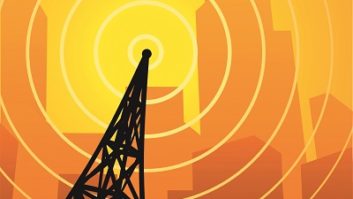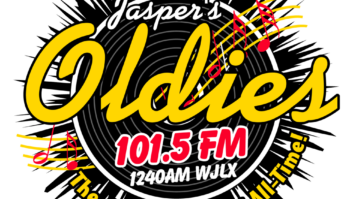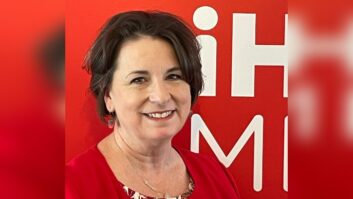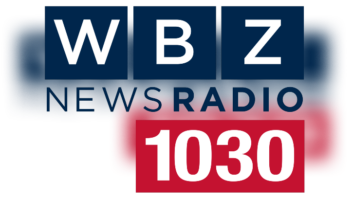The author is a veteran broadcast engineer whose identity is cloaked and whose opinions appear periodically in RW and RW Engineering Extra.
Radio’s version of class warfare politics is coming into full view through iHeartMedia’s discussions at the FCC in recent months regarding contour protection limits for AM “anchor stations.”

The company owns many of the full-time 50 kW U.S. blowtorches that still enjoy significant ratings and revenue; it has 18 Class A stations; all but one are in the lower 48, the other is in Alaska. Meanwhile, many smaller AMs continue to struggle and have been crying for FCC help to “save” occupants of the band.
IHM doesn’t want the FCC to change nighttime skywave protections for big Class As. So, as reported by radioworld.com in October, Sara Morris, senior director of government affairs for iHeartCommunications, met recently with Maria Kirby, legal advisor to FCC Chairman Tom Wheeler to discuss iHeart’s concerns in the revitalization proceeding. A follow-up letter from iHeart attorney Marissa Repp reiterated the company’s thinking in writing and posed 17 questions to the commission (see below). Most of these addressed potential interference to Class A skywave and secondary groundwave coverage areas. This came not long before publication of the revitalization order and was one of several conversations between iHeart and the commission this year.
The subsequent FCC order only raises the stakes, focusing more attention on the unresolved question of what to do about Class As.
A LONELY VOICE?
In support of its arguments, iHeart cited research indicating that “more than a half-million existing, actual listeners of Class A stations, accounting for 13 million listening hours per month … would lose their existing service.”
In his editor’s column in July, Radio World’s Paul McLane quoted iHeart’s Jeff Littlejohn talking about this analysis, which iHeart based on extrapolations from PPM data. But we need to know more than we’ve heard publicly about this. It will help us understand the facts in the controversy if we knew how iHeart came up with these numbers, which now are being cited by others who support ongoing protections.
The claim is important, given that most engineers and industry observers believe that few listeners still use or rely on skywave reception of big AM boomers anymore. Despite outcries from nostalgic distance listeners, the assumption of late has been that satellite and now Internet radio have largely replaced AM listening to these stations, especially in sparsely populated areas. The long-haul truckers who dial up programs like “Coast to Coast AM” and “Red Eye Radio” at night now do so using alternate delivery platforms.
Thus, some argue, the commission can afford to scale back protections to open up room for smaller and more localized broadcast signals. Further, the availability of many media voices renders big protected coverage areas unnecessary.
But how true and far-reaching are these underlying assumptions? Common wisdom already tends to misjudge and underestimate the depth and penetration of overall radio listening, especially from experts who predicted that the Internet and the connected car would make over-the-air radio irrelevant by now. So I’d like to see Edison Research or some other third party do a comprehensive study to provide real data about fringe area and skywave AM listening.
Listeners who still use distant groundwave and skywave reception do encounter higher ambient noise levels that make weaker AM signals more unreliable. But rural and remote areas are much less affected by many of the obnoxious noise generators found in urbanized areas.
Most Class A stations still enjoy huge coverage areas within their 0.1 mV/m day and night contours. There are exceptions, of course, depending on regional ground conductivity; the protected groundwave contour of WSB in Atlanta, for example, goes only a fraction of the distance covered by WHO or WLS because of ground conductivity.
When the FCC passed its recent order, it also opened a further notice of proposed rulemaking, as Paul McLane described in a column in November. As that FNPRM proceeds, iHeart presumably will continue to resist proposals to diminish Class A protections — during day, night or even critical hours.
But interestingly, companies like CBS, Cumulus, Cox, Bonneville, Hubbard and other Class A stakeholders seem quiet. They have not yet stepped forward to voice these concerns, at least not publicly or formally to the FCC as iHeart has done. (Their lack of contribution is evidenced by this text in the FCC order: “The advocates of reduced protection to Class A stations have differing views on exactly how to change the protection rules. Opposition to these commenter proposals comes chiefly from IHM, which states that Class A stations are among the only AM stations that garner substantial listenership.” (The italics are ours.)
Have other media companies given up on any value for skywave and, more importantly, secondary groundwave coverage for their Class As? Will they be more vocal in the next round of comments?
CLASS A QUESTIONS
Here are the questions posed by iHeartMedia to the FCC in a letter summarizing its concerns about possible changes to Class A protections of AM signals. It was sent and made public shortly before the commission published its AM revitalization order, in which the commission seeks further comments and discussion about such protections.
• To what extent do listeners go to the AM band to receive content from Class A AM stations? Would a reduction in Class A nighttime interference protections result in existing listeners of the AM band leaving the service due to increased interference, thereby further weakening the AM band and the ability of all AM stations to attract listeners? To what extent to Class A AM listeners also listen to non-Class A AM stations once they are tuned in to the AM dial? Will dimunition of AM “anchor stations” have an overall chilling effect on the AM band?
• To what extent does increased interference for Class A AM stations impact EAS Primary Entry Point stations for Department of Homeland Security/FEMA alerts during emergencies?
• What would be the effect on non-Class A AM stations that do not increase power on their ability to reach existing listeners, including their ability to provide local programming, public service information and EAS notifications? Are listeners in rural, remote and/or tribal areas disproportionately impacted?
• What are the potential number of actual listeners who would lose access to an AM station signal if changes to nighttime interference protections were adopted?
• Would listeners in rural or remove and/or tribal areas lose access to nighttime news, information and sports that they currently receive?
• Would Class A nighttime interference protection changes undermine the ability of these AM stations to continue to broadcast radio programming content serving the public interest, such as news?
• What would be the impact of nighttime interference protection reductions on Class A AM stations that qualify as small businesses?
• Would the rationale for modifying skywave protections remain valid if the commission provides new opportunities for AM stations to increase listenership through increased access to FM translators?
• Would power increases in nighttime coverage for Class B and D AM stations increase noise in the band overall? To what extent would such an increase in overall noise/interference negate any benefit from such power increases? To what extent would Class B and D AM stations that do not increase power be impacted by increased interference from those stations that do increase power on the same channel? Would any of these impacted stations be Small Business Entities? Would this increased interference impact the ability of stations to perform EAS functions?
ANCHOR TENANTS
IHeart describes Class A stations as “anchor tenants” in the AM Band Shopping Center. By far, these stations attract the highest numbers of all shoppers and listeners. To diminish them, iHeart argues, could hasten the demise of the entire AM radio enterprise.
This is classic class warfare. But the more salient question is whether local service trumps fringe or distant service in all cases. The FCC has pretty much given us its position on that in Paragraph 55 of its further NPRM: “Our goal of localism suggests that service from a local news and information source should be preferred over better reception of a more distant signal.”
Almost everything in the FCC’s recent actions seems designed to help the “little guys” on the AM dial and does little to help legacy high-power stations. The feeling has seemed to be that those stations already enjoy too many advantages and protections and that it’s the little guys who are getting screwed.
IHeart’s pre-emptive strikes appear to have persuaded the commission to propose retaining present Class A groundwave contour protections. Section IV, Paragraph 56 proposes to retain the present 0.1 mV/m contour protections both day and night, but to eliminate critical hours protection altogether. And the current 50 percent 0.5 mV/m skywave contour protection afforded Class As is absent in this proposal.
The elimination of the skywave contour rule effectively would mark the end of an era that has protected AM radio clear channel services as we’ve known them for almost 90 years.
The commission apparently has rejected iHeart’s plea to consider keeping at least some measure of skywave service protection in the NPRM and has followed through on its promise to let more local service opportunities trump distant services.
Critical hours rules — like the critical array designation — have always been somewhat of a nuisance and are probably an easy bone for Class As to lose in this proceeding.
In my reading, the FCC appears to be proposing a grand compromise in its further NPRM, eliminating skywave protection but retaining the present 0.1 mV/m groundwave contour protections both day and night for the Class As. If enacted, this will allow quite a few stations on co- and first-adjacent channels to Class As to improve their own local coverage by letting out nighttime patterns in their Class A protected nulls.
So there is an important discussion at hand. In my opinion, iHeart was justified in asking its 17 questions about Class A coverage protections. Before the NPRM turns into an order, many of those questions need quantifiable answers based on statistically valid studies, rather than anecdotal reply comments. Meanwhile, even though iHeart is not likely to get everything it was hoping for, it has at least for now convinced the commission that some Big Guys still have a Big Stake in the AM improvement proposals. The next battleground in this debate will be whether the 0.1 mV/m groundwave contour protection being proposed is too generous for the Class As and should be pushed up to the 0.5 mV/m contour.
You can read the order and further NPRM at http://tinyurl.com/rw-AM-order. As debate unfolds over these comprehensive proposals, it remains to be seen whether comments or substantive new information about AM Class A service to listeners in skywave and secondary coverage contours will justify adopting the proposed contour protections in a final report and order.
Comment on this or any story. Email[email protected].










